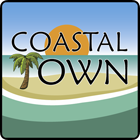
Lake News Alerts
We'd like to send you lake news articles, videos, and podcasts from around the web.
 We will never share your email
|
Waterfront Development
Waterfront development refers to the strategic planning, design, and construction of projects along bodies of water such as rivers, lakes, or coastlines. These projects aim to enhance economic, social, environmental, and cultural outcomes by transforming underutilized or degraded waterfront areas into vibrant, functional spaces. Below is a concise overview based on current knowledge and trends:
Key Aspects of Waterfront Development
- Economic Benefits:
-
Waterfronts often attract tourism, commercial activity, and real estate investment. Developments like mixed-use complexes (shops, restaurants, offices) and recreational facilities boost local economies.
-
Examples include Baltimore’s Inner Harbor and London’s South Bank, where revitalized waterfronts became economic hubs.
- Social and Cultural Impacts:
-
Well-designed waterfronts create public spaces for recreation, cultural events, and community gatherings, fostering social cohesion.
-
Projects often incorporate cultural landmarks, museums, or art installations to preserve local heritage and attract visitors.
- Environmental Considerations:
-
Modern waterfront development emphasizes sustainability, such as restoring ecosystems, improving water quality, and using green infrastructure (e.g., permeable surfaces, wetlands).
-
Climate resilience is critical, with designs accounting for rising sea levels, flooding, and erosion through features like elevated promenades or natural buffers.
- Urban Planning and Design:
-
Developments typically integrate public access (boardwalks, parks), mixed-use zoning, and connectivity to urban centers via transit or pedestrian pathways.
-
Iconic examples include Singapore’s Marina Bay, blending residential, commercial, and recreational spaces, and Dubai’s waterfront projects with ambitious urban expansion.
- Challenges:
-
High costs and complex stakeholder coordination (government, private developers, communities).
-
Balancing development with environmental preservation and public access.
-
Gentrification risks, which can displace local communities or limit affordability.
Trends in Waterfront Development (2025)
-
Climate Adaptation: Increasing focus on resilient infrastructure, such as floating structures or flood-resistant designs, especially in coastal cities.
-
Smart Technology: Integration of IoT for managing public spaces, energy-efficient systems, and real-time environmental monitoring.
-
Community-Centric Design: Emphasis on inclusive spaces that prioritize local needs over purely commercial interests.
-
Blue Economy: Leveraging waterfronts for sustainable industries like aquaculture, renewable energy (e.g., tidal power), or eco-tourism.
Resources
-
Urban Land Institute (uli.org) for case studies on waterfront revitalization.
-
Waterfront Alliance (waterfrontalliance.org) for best practices in resilient design.
|






